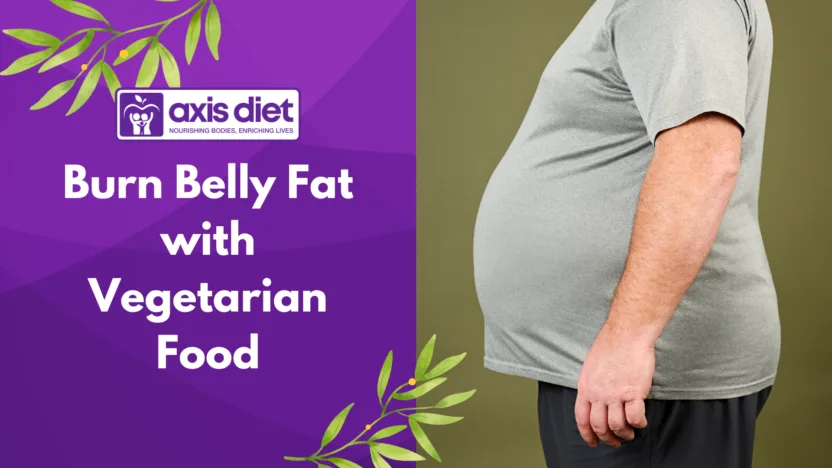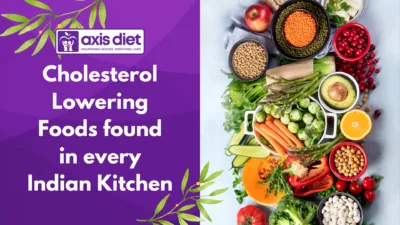Exploring vegetarian Indian foods reveals delicious options that can aid in burning belly fat. By incorporating these nutrient-dense meals into your diet, you can enjoy flavorful dishes while managing your weight effectively. Let’s dive into five foods that not only tantalize your taste buds but also contribute to your weight loss journey.
Introduction to Vegetarian Weight Loss in India
Vegetarian diets hold a prominent place in Indian culture. With over 30% of the population adhering to vegetarianism, these diets are deeply woven into the fabric of society. The reasons for this preference are varied, ranging from cultural and religious beliefs to health and environmental considerations. A significant number of people choose vegetarianism as a means to promote better health and longevity.
One important aspect of a vegetarian diet is its potential role in weight loss. Many vegetarian foods are low in calories yet rich in nutrients. This can aid individuals who wish to lose weight while ensuring their bodies receive the necessary vitamins and minerals. A well-planned vegetarian diet encourages the consumption of whole foods, such as fruits, vegetables, legumes, and whole grains, which can enhance metabolic efficiency and aid in reducing belly fat.
The health benefits associated with vegetarianism are numerous. Vegetarian diets are linked to lower risks of chronic diseases, including heart ailments, diabetes, and hypertension. They are often higher in dietary fiber, which promotes digestion and helps in weight management. Consuming high-fiber foods can help individuals feel fuller for longer, ultimately leading to a decrease in overall calorie intake.
In addition, vegetarian diets are often abundant in antioxidants, vitamins, and minerals, which help maintain optimal health. Spices commonly used in Indian cooking, such as turmeric, cumin, and ginger, not only enhance flavor but also provide health benefits that further complement a weight loss regimen. These spices can help with digestion and may possess anti-inflammatory properties, which are crucial for overall health.
An essential component of vegetarian diets in India is legumes. Lentils, chickpeas, and beans provide essential protein while being low in fat. They are a staple in many Indian households, used in various traditional dishes. This emphasis on legumes makes it easier to maintain a balanced diet while focusing on weight loss. Nutritionally, legumes contain soluble fiber, which contributes to lower cholesterol levels and promotes better cardiovascular health.
Culturally, meals often bring families together, making it easier to adopt and maintain a vegetarian lifestyle. These shared meals can be planned to include a rich variety of foods, ensuring that nutritional needs are met. The choice to maintain a vegetarian diet aligns with broader dietary trends that prioritize health, wellness, and sustainability. As such, embracing vegetarianism not only supports individual health but also promotes environmental sustainability.
For more insight into the benefits of vegetarianism and practical dietary guidelines, visit this weight loss diet plan for women over 30. Understanding the nuances of a vegetarian diet can empower individuals to make informed choices that support their health goals.
Chickpeas and Their Benefits
Chickpeas, also known as garbanzo beans, are a remarkable addition to any vegetarian diet, especially for those seeking to burn belly fat. These legumes are rich in essential nutrients and possess unique properties that promote weight loss. High in protein and fiber, chickpeas aid in keeping the body full for longer periods. This satiety helps in controlling cravings and managing calorie intake effectively.
Nutritionally, chickpeas pack a punch. They are an excellent source of essential vitamins and minerals, including iron, magnesium, and zinc. Furthermore, they contain soluble fiber, which is beneficial for heart health and helps in lowering cholesterol levels. The presence of complex carbohydrates provides sustained energy without the spike in blood sugar, making them ideal for weight management.
In terms of weight loss, chickpeas play a pivotal role due to their low glycemic index. Foods with a low glycemic index cause a gradual rise in glucose levels, preventing sudden sugar spikes that often lead to hunger pangs. Regular consumption of chickpeas can help maintain balanced blood sugar levels, thereby decreasing the likelihood of excess cravings and overeating.
One of the most popular dishes made with chickpeas is Chana Masala. This flavorful dish not only satisfies the taste buds but also aligns well with a weight loss diet. Made with spices like cumin, coriander, and turmeric, Chana Masala is both nutritious and delicious. These spices add anti-inflammatory benefits, which can further support weight loss efforts. The combination of chickpeas with tomatoes and spices creates a meal that is high in fiber and low in calories, making it a perfect fit for burning belly fat.
In addition to being versatile in cooking, chickpeas can easily be incorporated into salads, soups, and even as snacks when roasted. Their adaptability means they can take on many flavors and textures, pleasing different palates. For those pursuing a vegetarian weight loss diet in India, incorporating chickpeas can provide essential nutrition without compromising on taste.
For anyone interested in healthier meal options while reducing calorie intake, low-calorie Indian meals offer various creative ideas that include ingredients like chickpeas. Embracing such nutritious foods can significantly contribute to a sustainable weight loss journey while enjoying the rich flavors of Indian cuisine.
The Power of Lentils
Lentils are a cornerstone of vegetarian cuisine in India, offering an array of health benefits. Rich in protein, fiber, and essential nutrients, lentils serve as a versatile ingredient that can support weight loss while enhancing metabolism. Their high nutrient density makes them an excellent choice for those looking to reduce body fat, particularly around the belly.
One of the standout features of lentils is their impressive protein content. Unlike many plant-based foods, lentils provide a complete source of protein when complemented with grains like rice or chapati. This makes them especially valuable for vegetarians, as protein is vital for muscle repair and growth, both essential in any weight loss regime. Meals with adequate protein also enhance satiety, keeping hunger at bay for longer periods.
Additionally, lentils are rich in fiber, which plays a crucial role in digestion. Fiber helps regulate the digestive system and can assist in preventing bloating, a common issue for those trying to lose weight. Moreover, a diet high in fiber is associated with better blood sugar control, reducing sugar cravings that can lead to excessive snacking.
Among popular lentil dishes, Dal Tadka stands out not only for its flavor but also for its weight loss benefits. Typically made with yellow split lentils, Dal Tadka is seasoned with cumin, garlic, and often garnished with fresh coriander. When cooked without excessive oil or creamy additions, this dish becomes a suitable option for those focused on shedding belly fat. The hearty nature of dal provides essential nutrients, while its fiber and protein content ensures that you feel satisfied after a meal.
Another important aspect of lentils is their low glycemic index (GI), which means they cause a slow and steady rise in blood sugar levels. This characteristic helps in maintaining energy levels without the sudden crashes that often lead to cravings for unhealthy snacks. Incorporating lentils into your meals can help stabilize your metabolism, making it more efficient in burning fat.
Experimenting with various types of lentils, such as red, green, or black lentils, can add diversity to your diet, ensuring a range of nutrients. Each type offers unique flavors and textures, allowing for endless culinary creativity. For insights into other nutritious and low-calorie Indian meals, check out this article on low-calorie Indian meals that can complement a vegetarian diet geared towards weight loss.
In summary, lentils serve as a powerful food choice for those aiming to burn belly fat. Their high protein and fiber content, along with their flavorful versatility, make lentils an essential component of a balanced vegetarian weight loss diet.
Spicy Cauliflower and Its Fat-Burning Qualities
Cauliflower is a remarkable vegetable that deserves attention in a vegetarian weight loss diet. It is low in calories yet high in dietary fiber. One serving of cauliflower contains only about 25 calories, making it a fantastic option for those looking to shed belly fat while enjoying delicious meals. Additionally, its high fiber content promotes satiety, which can help curb snacking between meals. This makes cauliflower a smart addition to a weight management plan.
Spicy cauliflower dishes, like Gobi Manchurian, transform this humble vegetable into a flavorful treat. The basic preparation involves coating cauliflower florets in a light batter and frying them until crispy. From there, they are tossed in a fragrant sauce made with garlic, ginger, soy sauce, and an array of spices. This preparation not only enhances the flavor but also helps retain the nutritional benefits of cauliflower.
When considering cooking methods, steaming or roasting are preferred for a healthier spin. Steaming preserves most of the nutrients, and roasting brings out a unique depth of flavor and texture that can be very satisfying. Adding a sprinkle of spices like turmeric, cumin, or chili powder can enhance its fat-burning properties, while also providing additional health benefits. Here’s how to incorporate cauliflower into your meals effectively:
- Gobi Manchurian: Prepare this classic dish by lightly battering the florets, frying, and then tossing them with a spicy sauce.
- Cauliflower Rice: Grate or pulse cauliflower to create rice-sized pieces and use it as a low-calorie substitute for traditional rice.
- Cauliflower Soup: Blend steamed cauliflower with spices and vegetable broth for a hearty yet low-calorie soup.
- Roasted Cauliflower: Toss cauliflower florets with olive oil and spices, then roast until golden brown for a crunchy snack.
In addition to specific dishes, cauliflower functions as a versatile base in various recipes. In salads, casseroles, or as a side dish, it can seamlessly incorporate into different meal plans.
Moreover, cauliflower is rich in antioxidants and various vitamins, contributing to overall health while supporting weight loss. Its low glycemic index makes it suitable for individuals monitoring blood sugar levels.
The various cooking methods and flavorful recipes available ensure that cauliflower can remain a staple in a vegetarian diet focused on burning belly fat. With its excellent nutritional profile and endless possibilities, incorporating cauliflower into meals can be both enjoyable and beneficial. For those looking to explore more low-calorie Indian meals, cauliflower is a perfect choice that will nurture your taste buds and waistline alike.
Spinach for a Healthy Beltline
Spinach, or palak, is a leafy green vegetable brimming with nutrients that can play a significant role in fat burning. This versatile ingredient is low in calories yet high in essential vitamins and minerals, making it a perfect addition to a vegetarian weight loss diet in India. Spinach is rich in fibers, which not only aids digestion but also keeps you feeling full for longer periods. This property can help in reducing overall calorie intake and promoting a healthier beltline.
The key nutritional aspect of spinach lies in its high content of iron and magnesium. Iron is vital for producing hemoglobin, ensuring your body gets sufficient oxygen. This boosts energy levels, allowing for better workouts and leading to enhanced fat burning. Magnesium, on the other hand, plays a crucial role in over 300 biochemical reactions in the body, including those associated with regulating metabolism. The presence of antioxidants like lutein and beta-carotene in spinach further aids in fighting oxidative stress, contributing to overall health and even weight loss.
When it comes to versatility, spinach shines in numerous vegetarian Indian dishes. You can incorporate palak into everyday meals easily. For instance, Palak Paneer can be prepared by sautéing spinach with spices and cubes of paneer, creating a rich protein-packed dish. Palak Dal is another nutritious option where spinach is combined with lentils, providing a fulfilling meal with a perfect balance of protein and fiber.
Additionally, Palak Paratha serves as a delightful breakfast option. Whole wheat flour can be used with pureed spinach to prepare nutritious flatbreads, perfect for a filling meal. For a lighter choice, consider a Palak Salad, featuring raw spinach leaves tossed with tomatoes, cucumbers, and a light dressing, making it refreshing and low in calories.
Including spinach in your diet not only enhances meal variety but also contributes to effective weight management. The numerous cooking methods available allow for creativity and flexibility, ensuring you never tire of this nutritious green. Moreover, it complements other ingredients naturally found in Indian cuisine, such as spices and lentils, creating balanced meals that support weight loss without compromising on flavor.
For more insights on nutritious vegetarian meals, visit this detailed guide on low-calorie Indian meals, which will provide additional tips and recipes to bolster your weight loss journey successfully.
The Role of Whole Grains
Whole grains are essential components of a balanced vegetarian weight loss diet. Incorporating them into your meals not only provides vital nutrients but also aids in burning belly fat. Brown rice and quinoa are two excellent choices. They are rich in fiber, which helps regulate digestion and keeps you feeling full longer. This can lead to reduced calorie intake throughout the day.
Whole grains offer complex carbohydrates that are digested slowly. This slow digestion results in a steady release of energy. Unlike refined grains, whole grains maintain their nutrient integrity, making them a healthier option.
For those in India, using whole grains in traditional recipes is straightforward and delicious. Here are a few ideas that can fit seamlessly into your meal preparations:
- Quinoa Pulao: Cook quinoa in vegetable broth and sauté with vegetables like peas, carrots, and bell peppers. Season with cumin, coriander, and turmeric to enhance flavors. Serve as a side dish or on its own for a light meal.
- Brown Rice Khichdi: Combine brown rice with moong dal and vegetables such as spinach or zucchini. Add spices like ginger and black mustard seeds for added taste. This one-pot meal is both comforting and nutritious.
- Veggie Quinoa Salad: Toss cooked quinoa with diced cucumber, tomato, and onion. For added protein, consider adding chickpeas. Dress with lemon juice, olive oil, salt, and pepper. This refreshing salad works as a perfect lunch option.
Preparation tips can elevate these dishes further. Always rinse quinoa before cooking to remove its natural coating, which can taste bitter. For brown rice, soaking it for 30 minutes prior to cooking will reduce cooking time and make it fluffier.
Incorporating a variety of spices can create a flavorful experience. Spices like cumin, coriander, and turmeric not only enhance taste but also possess anti-inflammatory properties. These spices can boost metabolism and help with fat burning as part of your vegetarian diet.
Whole grains are versatile and can be adapted to various meals, ensuring you don’t get bored. Integrating them into your daily meals helps promote satiety, control hunger, and, ultimately, assist in achieving weight loss goals. For more insight into a balanced vegetarian weight loss approach, you might find useful ideas in this weight loss diet plan for women over 30.
Making Sustainable Changes
Weight loss is not just about cutting calories; it’s about making sustainable changes that complement your overall health. Transitioning to a balanced vegetarian diet can embrace this philosophy, especially when you integrate foods known for their fat-burning properties. Incorporating plant-based meals that are rich in nutrients can support both weight loss and overall wellness.
To create healthy eating habits, focus on including a variety of food groups. This ensures that you’re not just losing weight but nourishing your body. Here are some practical tips:
- Plan Your Meals: Set aside time each week for meal planning. This prevents impulsive, unhealthy food choices.
- Portion Control: Pay attention to serving sizes, even with healthy foods. Smaller plates can help manage portion sizes effectively.
- Whole Foods First: Prioritize unprocessed foods like lentils, beans, and a multitude of vegetables. These foods keep you full longer and provide essential nutrients.
- Stay Hydrated: Drinking plenty of water is crucial for overall health and can help curb hunger. Sometimes thirst is mistaken for hunger.
- Experiment with Spices: Spices like turmeric and cumin not only enhance flavor but also support metabolism. Incorporate these into your meals for added benefits.
- Mindful Eating: Slow down during meals. Focus on each bite, which can enhance your enjoyment of food and prevent overeating.
- Regular Exercise: Weight loss isn’t solely dependent on diet; combine your meals with regular physical activity for optimal results.
Consider adding vegetarian Indian foods that promote fat loss into your diet. For instance, dishes made with spinach, amaranth, and vegetables like bottle gourd or bitter gourd can be beneficial. These ingredients are low in calories and high in vital nutrients, making them excellent choices for weight loss.
Consulting with a nutritionist or dietitian can offer personalized insights tailored to your health goals. A professional can help you create a balanced vegetarian meal plan that includes suitable portions of protein, fiber, and carbohydrates. This step enhances your chances for sustainable weight loss while ensuring you get all the nutrients your body needs.
Making thoughtful changes in your eating habits is vital. Approach your weight loss journey with patience, focusing on readiness to change rather than immediate results. For more information on how to plan your meals effectively, check out this guide on balanced diets.
Final words
Incorporating these five vegetarian Indian foods into your diet can significantly aid in burning belly fat while providing essential nutrients. Making conscious food choices not only promotes weight loss but also leads to a healthier lifestyle. Take your first step toward effective weight management today.
The content provided in this blog post is intended for general knowledge and informational purposes only. It should not be considered a substitute for professional medical advice, diagnosis, or treatment. For personalized health recommendations tailored to your individual needs, we highly encourage you to connect with our certified clinical dietitians. Visit us at Axis Diet Consulting to schedule a consultation and take the first step toward your health journey!





